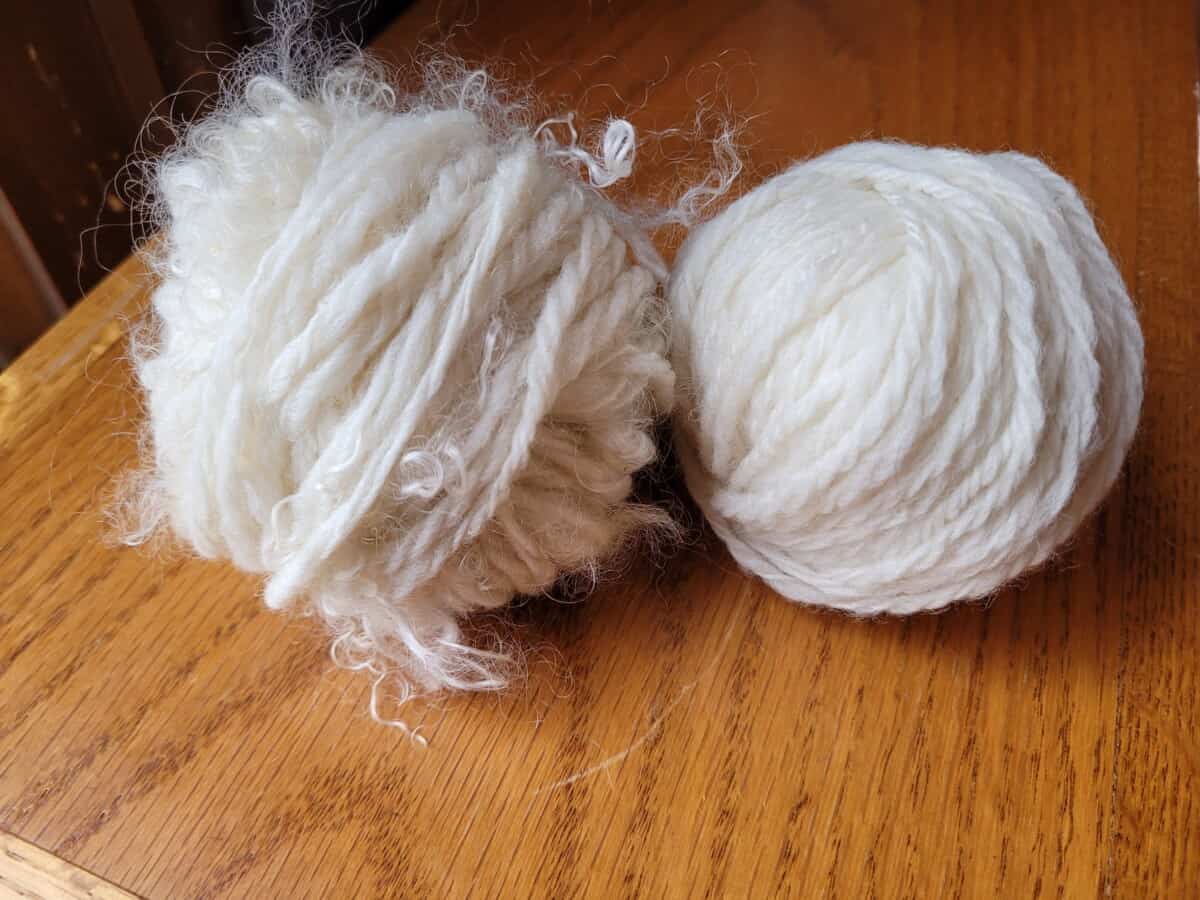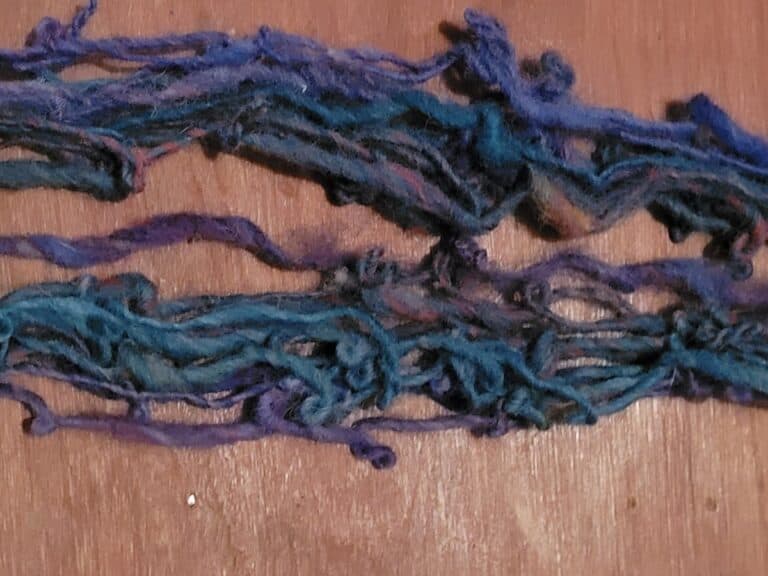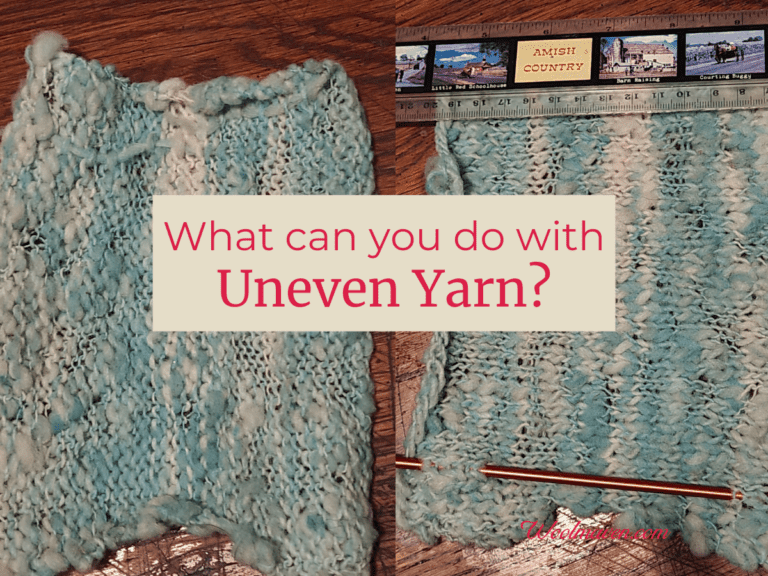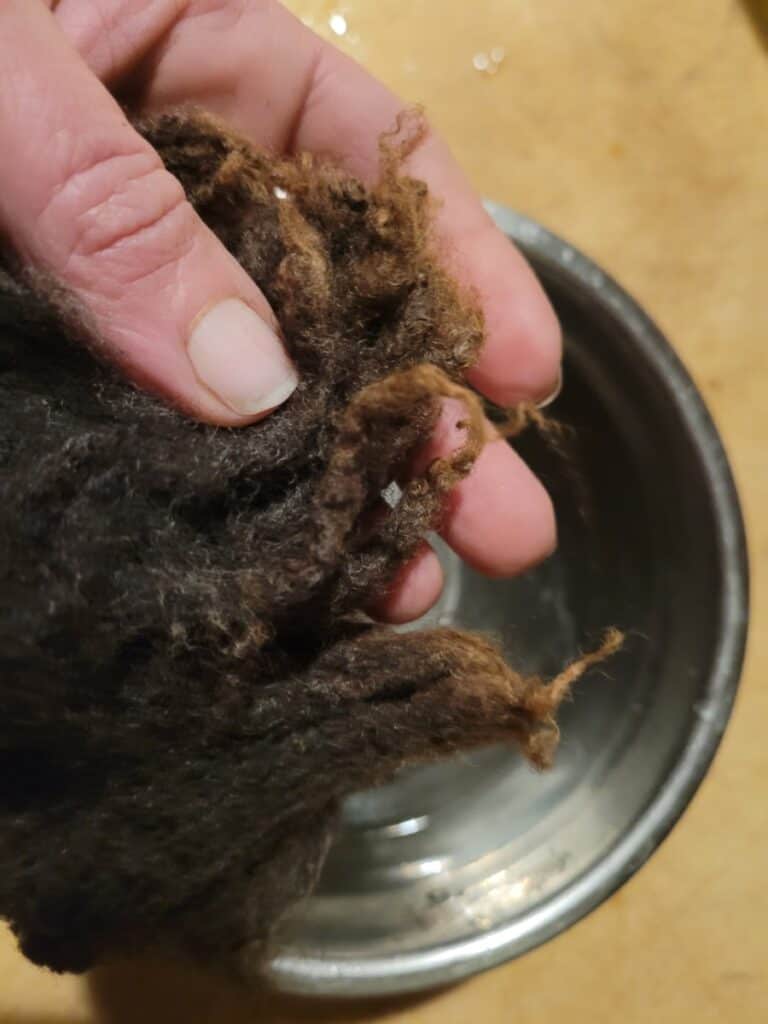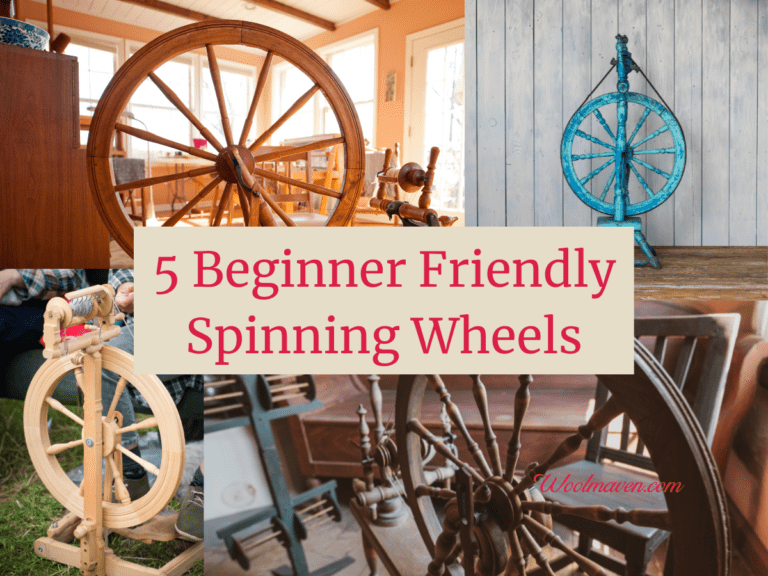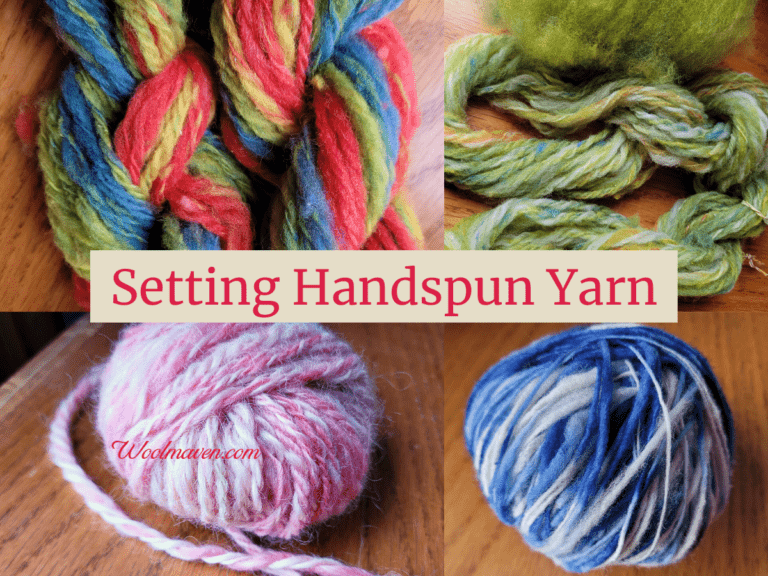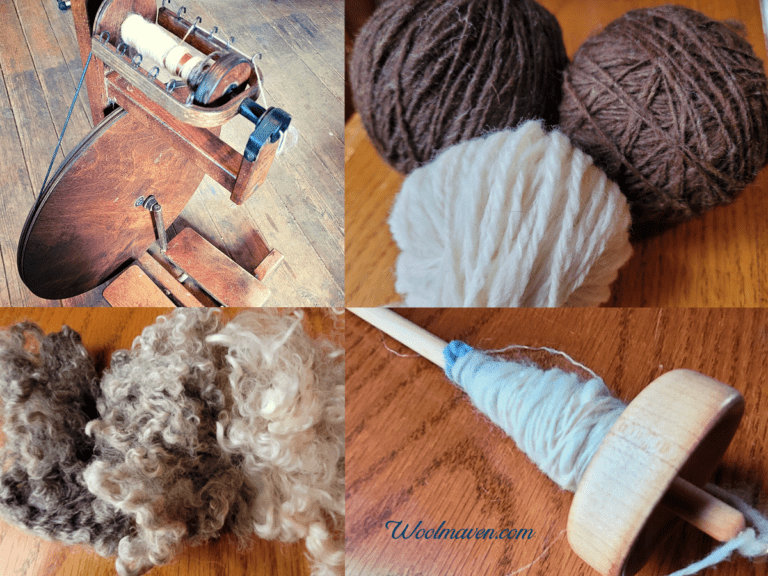How Do You Spin Yarn At The Gauge You Want?
Once we learn the basics of spinning yarn, now most spinners move to wanting to spin for a specific project.
Maybe you want to work with a new to you wool or you want to make enough yarn for a bigger project, like a vest or sweater.
How do you get your handspun yarn to match your needs for your project? More specifically, how do you get the right gauge in your handspun yarn?
To spin yarn at the gauge you require, you need to plan the project, use well prepared wool, pre draft or split the fiber, practice until you get the gauge you need and double check your spinning as you spin against a sample of yarn that is the gauge you want.
Cost To Spin Your Own Wool goes over the math of spinning your own yarns compared to buying them.
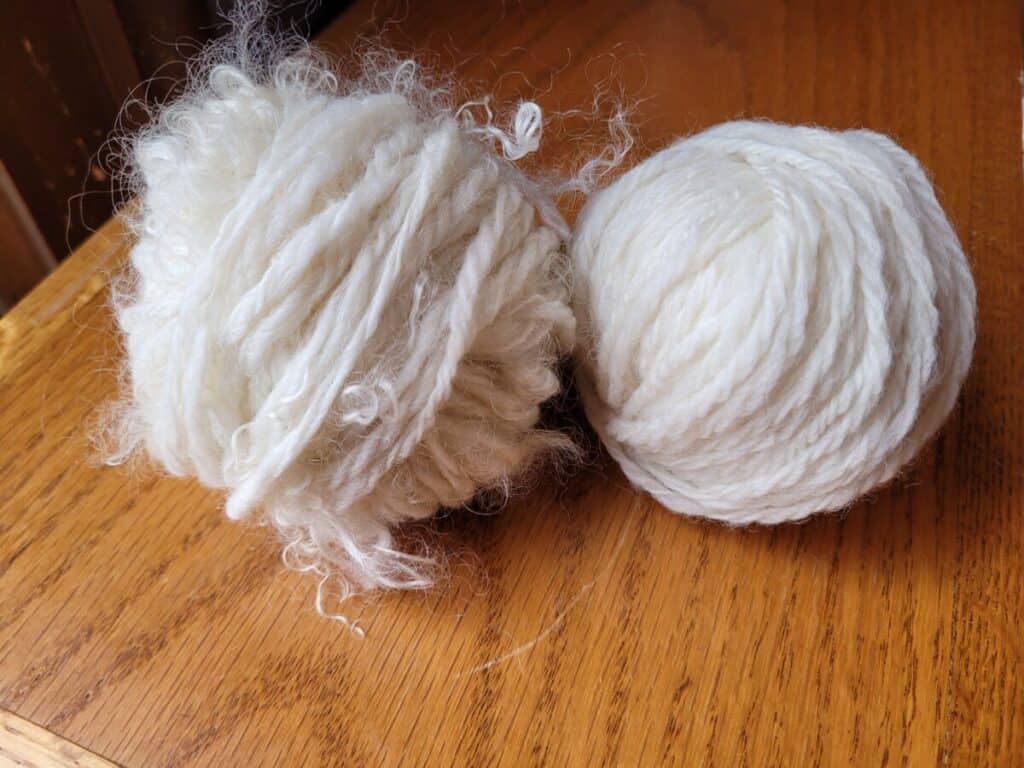
Plan your spinning, know the gauge you need
First off, you need to have a plan of what you are trying to do with your spinning for this project! To get the yarn you want and need, you need some specifics!
Here are some ideas to get you thinking:
- What is the gauge you are shooting for?
- Do you plan to ply the yarn or work with singles?
- What wool or combination of wools or other fibers are you using?
- Do you plan to knit, weave, crochet, etc. with the yarn?
I have to admit, I tend to not do all this planning and just fly by the seat of my pants style spin, but then I end up with yarns that are not what I wanted.
Gosh, how could that have happened? Easy, I didn’t have a plan to get the yarn I wanted, even thought I had a specific yarn in mind!
If you are doing something specific, you will need to have a more structured approach and do some practice spins and testing. You have to spin with purpose.
To be clear, if you are happy with whatever yarn the wool seems to want to make, you are just relaxing or exploring a new to you wool, super! Let the wool lead.
It can be nice to just spin and see what seems to work best for that fiber, but then you get what you get, which might be very different from what you thought!
Another consideration is your wheel, are you working within the ideal range for your wheel? This is a tradeoff we must all make, since no wheel is perfect for all types of spinning.
There is a range in which your wheel will excel and the further outside of that range you get, the harder it will be for you to easily make the yarn you want.
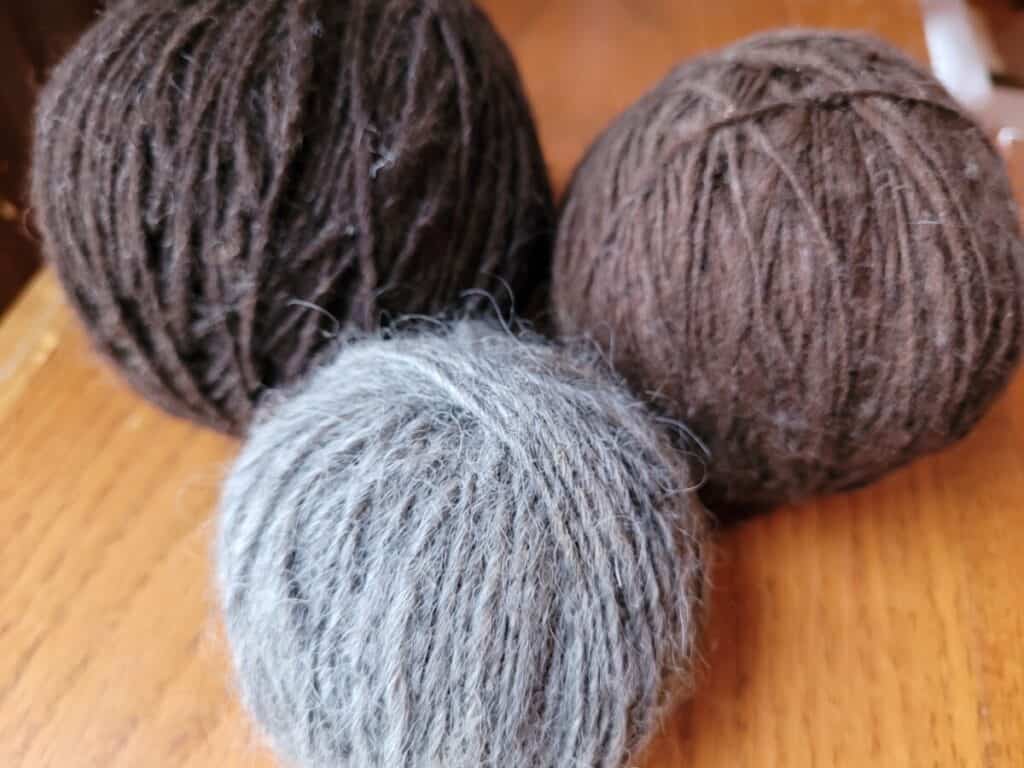
This post contains affiliate links, which means I receive commissions if you choose to purchase through links I provide (at no extra cost to you).
Use well prepared wool
This may be an obvious thing to you, but just in case you are not aware of it, using well prepared wool makes a huge difference in your resulting yarn.
Well prepared wool makes spinning so easy. Here is the protein fibers page at The Woolery, all are well prepared and the majority, with the exception of the unwashed fleeces, are ready to spin.
I had a terrible time getting any sort of finer spinning done until I purchased combed top, rather than using my home carded wool from our sheep.
Until then, I didn’t realize how much of spinning is dependent upon the preparation of the wool you start with!
I thought it was just my spinning and here it was the wool preparation! Which was me, as well, just not the where I thought the problem was.
When I started using combed top, bang, near instantly the me who could not spin finely is spinning finely!
The importance of using well prepared fiber can not be overstated!
Well prepared wool is to spin at nearly any gauge
Well prepared wool is easy to spin at nearly any gauge, this is why it’s so popular!
What is well prepared wool? Well prepared wool is wool that is thoroughly carded (and most likely combed) into well separated, uniform fibers that are easy to spin.
The easiest place to get great wool that is well prepared is to buy it from a shop that has professionally milled fiber.
This would be combed top or roving, with combed top being much more common than true roving.
You can card or comb your own wool, which are both skills that take time and practice to gain proficiency at.
If you are not willing to take your time and do a very thorough job of it, go with a milled wool first, then tackle preparing your own wool, once you know what well prepared fiber looks and spins like.
How To Get Raw Wool Ready To Spin In The Grease gives you some tips on preparing your own fiber for your spinning!
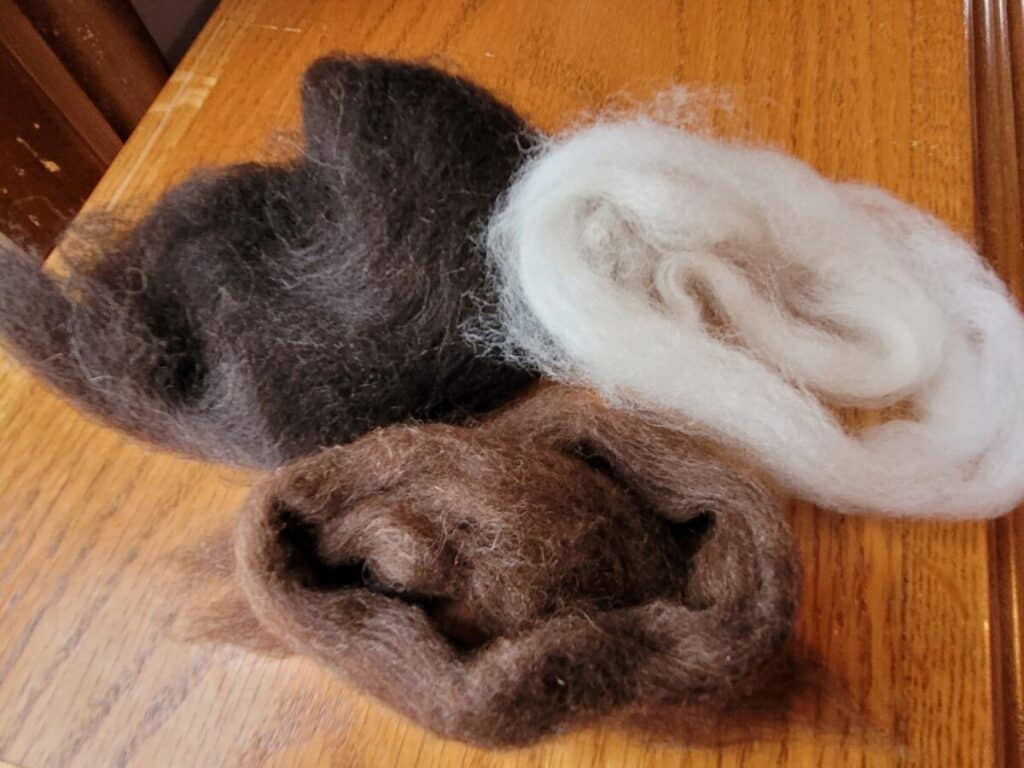
Pre draft or split your fiber
Now that you have a well prepared fiber that is suitable for your project, heavily consider pre drafting or splitting the roving.
Pre drafting is when you draft out the roving or top before you start spinning.
This gives you less to worry about while spinning so you can concentrate more on keeping the gauge you want rather than keeping up with a lot of drafting as well.
How much do you need to pre draft? This depends upon what you are starting with and what gauge of yarn you are aiming for.
If I am trying for a finer yarn, I’ll pre draft or, more likely, split the roving into strips, just so I have less fiber to work with. This helps me tremendously!
To split the roving (actually top) take a section of top about 1-1.5 feet long and split it into 2-4 sections. Give those a try.
Usually that does it for me, but don’t hesitate to split more, especially if you are aiming for a finer yarn!
Anytime that I find I am spinning too thickly, I stop and split the roving and it’s a near instant fix.
Have a consistent treadling speed
Another aspect to getting the gauge you want is to have a consistent treadling speed. You’ll have to test out what cadence gets you the yarn you want.
For me, generally have to slow down to give my hands time to draft out the fibers to the thickness I want before the twist gets too intense.
Use a different whorl
The other thing you can do is to change the whorl you are working with.
All wheels are a bit differently set up, so I’ll talk about what I do with my wheel, which is a Louet S15 DT.
My bobbins have 3 whorls so I can easily switch between them to figure out the combination that most easily gives me the gauge of yarn I am shooting for.
It sounds so obvious, but sometimes a minor change in speed makes a big difference in how easy it is to get the yarn I want.
I have been working on really slimming down the yarn I spin, mostly to chain ply it, with using a smaller whorl and concentrating on my drafting, it’s working.
If I keep the bobbin on the bigger whorl or don’t split the top, I tend to go back to chubby spinning.
Change the uptake to change yarn gauge
For me, changing the tension or uptake on the bobbin helps me to change my spinning.
For instance, if I want to spin a fatter yarn, I need to take it on to the bobbin a touch more aggressively than with a thinner yarn. Not a lot, just a touch.
If I want to spin a thinner yarn, I need to make the tension a little less, to give me time to do the drafting I need to.
I’m talking about slight adjustments here. You’ll feel the difference in uptake with very small adjustments to the tension.
Double check as you spin
Stop and check your gauge as you spin.
You can do this with an actual gauge or just use a sample that you have within reach and visually compare what you are spinning to what you want to spin.
Practice your gauge first
I have to admit, this is another thing that I tend to not do and sometimes it comes back to get me!
If you practice your gauge first, before you start a project, you can see what you get and make adjustments to your yarn before you get going on the bigger project.
Make a test swatch the same as your project
Make a test swatch to see how the final yarn, after setting and fulling (if you do any) performs.
This includes setting the yarn and knitting or crocheting it up into a swatch to see how it performs for you.
I am constantly surprised at how a wool is different from what I expected when spinning and then different again when knitting with it.
So, how does this relate to gauge? Easy, very often what you are spinning and the resulting yarn, after it is plyed and set are different depending upon how you set and full the yarn.
Some wools will poof, others hardly at all. You don’t know until you make a test run, from start to finish and see how what you are spinning will perform.
For me, the gauge of the yarn I spin is usually higher than what I think, especially if I am plying, even though it looked to be on target when I was spinning.
Hilltop Cloud has an interesting outlook on gauge, read her article Measuring Thickness of Handspun Yarns.

